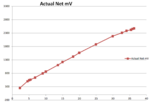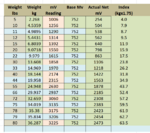I got a Shred earlier this year and have really enjoyed it. Subsequent to getting the Shred, I also got an electric assist road bike. One of the major differences that struck me between the two was the difference in how the assist was implemented. In general terms:
Shred - Each assist level (1-5) would result in power up to a certain speed. EG assist 1 was equal to around 11 MPH depending on battery charge. As you exceeded that speed, the assist would fade away and you would actually slow down to say 9.5 mph before it would pick up and then drop off again at around 11. level 2 would be same thing around 15 mph (15 down to 13 up to 15 etc). If you wanted to go faster you would either have to do all the work or change to a higher assist level.
Road bike - Again 5 levels of assist. The way the OEM describes it is actual % of power/torque with the levels of assist from 100% up to 360%. The assist goes all the way up until you hit the speed limit regardless of the level you are on. There is no sensation of the assist starting and stopping. It makes you feel like you have bigger or smaller muscles depending on the level of assist you choose. for example, if you choose level 1 at 100% and you are putting in 100 watts, the bike will put in 100 watts as well for a total of 200 watts. If the terrain/wind means this well get you 15 MPH, that's what you get, if the terrain changes your speed will as well. Very natural.
After I got the Road bike I became use to its implementation of assist and started looking around to change the Shred. After a lot of reading on different forums regarding programing the controller, I decided to give it a try. The winters make it hard to bike a lot so this will give me a project to work on.
Notice
1) The majority of the information is from various other web sites except for items I mention are derived from my own testing
2) As soon as I changed the OEM programming I have conceded that I have no warranty and assume all risk of burning up the motor or the controller.
The first thing I did was download the original configuration. Below is the first Tab (Basic) and confirms that there are speed limits imposed based on the assist level chosen.

The next tab is pedal assist. Again this is the original factory setting
There are some behaviors about the original program that I didn't like a lot.
1) When going up a hill, the lower the gear I shifted to the less assistance I got.
2) When I stopped pedaling, the motor continued for a short period
These items are addressed with changes to this tab

The next tab is the throttle.

The last tab is the Torque. There is a lot going on here and I suspect I will be doing a lot of my testing on these settings.

That's it for the original settings of the Shred. Next post will be on the settings I have done to Basic page and the Pedal Assist.
Shred - Each assist level (1-5) would result in power up to a certain speed. EG assist 1 was equal to around 11 MPH depending on battery charge. As you exceeded that speed, the assist would fade away and you would actually slow down to say 9.5 mph before it would pick up and then drop off again at around 11. level 2 would be same thing around 15 mph (15 down to 13 up to 15 etc). If you wanted to go faster you would either have to do all the work or change to a higher assist level.
Road bike - Again 5 levels of assist. The way the OEM describes it is actual % of power/torque with the levels of assist from 100% up to 360%. The assist goes all the way up until you hit the speed limit regardless of the level you are on. There is no sensation of the assist starting and stopping. It makes you feel like you have bigger or smaller muscles depending on the level of assist you choose. for example, if you choose level 1 at 100% and you are putting in 100 watts, the bike will put in 100 watts as well for a total of 200 watts. If the terrain/wind means this well get you 15 MPH, that's what you get, if the terrain changes your speed will as well. Very natural.
After I got the Road bike I became use to its implementation of assist and started looking around to change the Shred. After a lot of reading on different forums regarding programing the controller, I decided to give it a try. The winters make it hard to bike a lot so this will give me a project to work on.
Notice
1) The majority of the information is from various other web sites except for items I mention are derived from my own testing
2) As soon as I changed the OEM programming I have conceded that I have no warranty and assume all risk of burning up the motor or the controller.
The first thing I did was download the original configuration. Below is the first Tab (Basic) and confirms that there are speed limits imposed based on the assist level chosen.
The next tab is pedal assist. Again this is the original factory setting
There are some behaviors about the original program that I didn't like a lot.
1) When going up a hill, the lower the gear I shifted to the less assistance I got.
2) When I stopped pedaling, the motor continued for a short period
These items are addressed with changes to this tab
The next tab is the throttle.
The last tab is the Torque. There is a lot going on here and I suspect I will be doing a lot of my testing on these settings.
That's it for the original settings of the Shred. Next post will be on the settings I have done to Basic page and the Pedal Assist.
Last edited:




